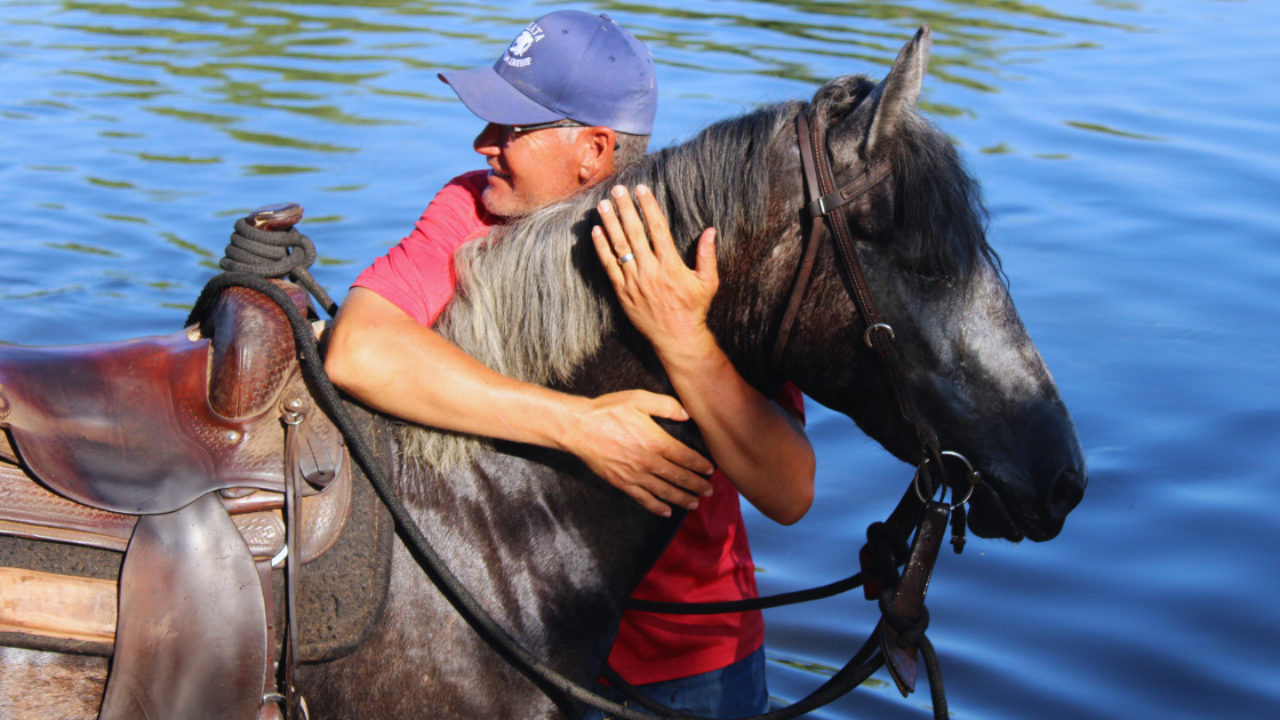Q: “I’ve been working with my 3 year old with a lot of round penning, desensitization, and lunging. Over this last week, it’s been like night and day with our ground work. She’s done amazing and has become much softer. The one thing I’m struggling with though is although she’s fairly good with being touched anywhere and everywhere with the rope from all angles, she doesn’t like to be touched by anyone including me with their hand. I know her past. There is no abusive history. I’m wondering what steps I could take to get her more comfortable with touch. She instantly pins her ears and goes to bite. I don’t feel it’s a connection issue as she loves to be around me and is fully willing to give her focus.”
A: While it’s hard to give advice about behaviors that I don’t see and experience myself, I’ll try to give you some advice as I understand your situation:
First of all, some horses will pin their ears and go to bite a handler when being touched around the girth, barrel, or flank when they have ulcers. This isn’t always the case, but it might be a good idea to first rule out potential ulcers causing this behavior. If ulcers is not the answer, and your mare is truly well desensitized to the sound and feel of a stick and string, lead rope, and a flag, both in standing still (desensitizing to rest) and while moving, and she simply doesn’t like the feel of a hand on her body, then it’s simply of matter of approach and retreat to help her feel comfortable being touched.
If it’s sensitivity to being touched that she struggles with, start with touching somewhere she’s okay with, like on the forehead for example, and then move your hand from the forehead and down the side of the neck towards the withers. When she starts to raise her head in agitation or anxiety, retreat by moving your hand back to a spot she’s comfortable with. By retreating when she shows signs of distress, she’ll begin to lose her phobia/anxiety/sensitivity towards being touched in those new areas, and over hundreds and sometimes thousands of attempts, you will be able to reach all areas of her body with your hands.
Start with some rubbing, followed by scratching and even patting eventually when she’s ready for it. Remember that when you’re on her left side, it’s safest to hold the lead rope tightly in your left hand with her nose tipped towards you. By keeping her nose tipped towards you, you can better avoid being kicked. If this behavior of her wanting to bite when touched is less sensitivity-related and more of a bad behavior your horse has picked up, then when you go to touch her with your hand and she goes to bite you, jerk down firmly on the lead rope, sometimes with multiple jerks. Make sure you are using a stiff rope halter for maximum pressure efficiency. You may want to jerk down and also back her up, making her feel a little uncomfortable while moving her feet. When she learns that her biting will result in pressure from jerking down on the lead rope and then being asked to move her feet and work (this could include exercises like lunging as well), she should stop behaving this way within a short period of time.
Most importantly, you must keep yourself safe, so if there is biting behavior, you must be vigilant and address it right away before you or someone else gets seriously hurt.

